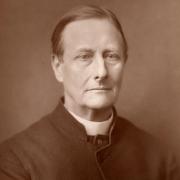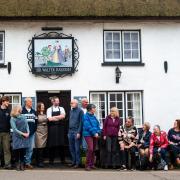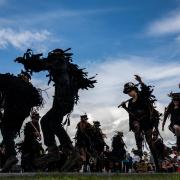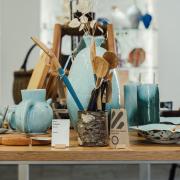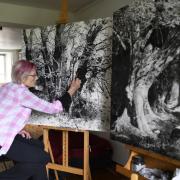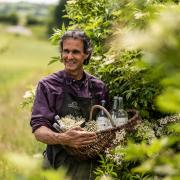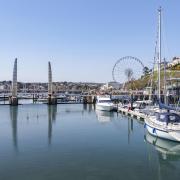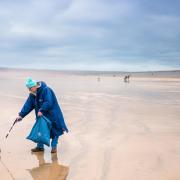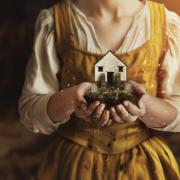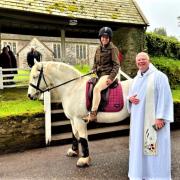An award-winning film set in Devon has been a labour of love for one woman who wrote the script, made the costumes, sourced and made the props and sets, produced, directed and starred in it. Caroline Corrie talks to Catherine Courtenay about the making of Shalborne
As she waded through moorland bogs in heeled leather boots and sodden petticoats, Caroline Corrie must have thought it was all too much... And that was before she’d got to the frozen tree frog incident.
It was the depths of winter and, as well as being dressed in Victorian costume, Caroline was struggling to push a man in a wooden cart across Dartmoor’s treacherous landscape; but she wasn’t going to give up – nothing was going to stop her making her first feature film.
Shalborne is a historical drama set in 1905, with Caroline playing the role of Helen – the woman who is pushing her ailing father in the cart across the moor.

It took her seven years to make, but this July saw Shalborne’s world premiere at the 22nd Female Eye Film Festival in Toronto, where it picked up the Best Foreign Feature award.
In 2011, RADA-trained Caroline had three young children and was contemplating juggling motherhood with the future of her acting career. Jobs were hard to find, despite countless auditions - babies in tow. ‘So I thought, what shall I do? I know, I’ll write a screenplay and then I can make a film.’
That’s how the Shalborne project began. Caroline had no money to make a film, but through a combination of luck, huge generosity and support from friends, local people and businesses, and sheer dogged determination, she succeeded.

‘I started writing the film with a two-year-old and four-year-old twins, sitting in the car as the only quiet place to work.’
When the family moved to Devon to begin another project in Salcombe Caroline came across the Emmy nominated cinematographer Simon Niblett.
He lived nearby so she emailed him for a bit of advice on her film and to her utter delight he agreed to help her.

‘At that point I thought, “I’ve got to make the costumes. Basically, I’m going to have to do everything”.’
Fortunately, Caroline had chosen wardrobe as her stagecraft specialism when she was doing her degree at Birmingham university, so she knew she could make a corset.
She went to charity shops in Kingsbridge for fabrics, as well as props, and went online to find more material. ‘I got 10m of this beautiful Italian wool fabric for £20.’

The owners, David Fursdon, Lord Lieutenant of Devon and his wife Catriona, were not only very supportive, they also, by chance, came to the rescue with Caroline’s costume dilemma.
‘Catriona said, “I’ve got all this lace in the loft, can you do anything with it?” She gave me two massive Ikea bags of stuff that she’d found. I went home and hand washed everything in these bags with bicarbonate of soda, just as the Victorians would have done. It was beautiful lace and linen, shirts and petticoats and nightgowns, a baptism dress and lots of underwear – it was an incredible collection.’
‘So, all the lace in the film is original Victorian lace that came from Fursdon.’
The filming process was to take almost four years. ‘Each shoot took around three months to prepare, making costumes, sourcing props, finding locations and lining up everyone’s time’, she says.

‘We used a little National Trust barn, it was quite derelict when we started but in process of filming they repointed and reroofed it and put doors on it – that was a nightmare!’
Relying on the goodwill of the actors and working around their schedules was tricky, as was the work commitments of director of photography Simon, whose busy nature photography career threw up a few challenges.
Caroline says: ‘Every time I needed him to film, there was some major natural phenomenon happening! In April we needed to catch the bluebells, the seasons were very important to the film, but Simon was supposed to be filming defrosting tree frogs in Canada.
‘I didn’t even know that frogs froze, or lived in trees, but they do - and they started defrosting early because of global warming!
I had all the actors lined up, all set to go, and Simon was on a 24 hour call. If these frogs started defrosting he had to go.’

Caroline is immensely grateful to everyone who helped and gave their time. Most were doing everything for free or for a token amount. She paid travel expenses for the actors, and also cooked to provide meals when necessary for cast and crew –as well as her three small children.
‘Everyone wanted to get involved, from the outset they were onboard with the vision – that had to be their primary motive. Any payment was more of a thank you.’
Post production was the final major hurdle, and a very difficult area to navigate. But Caroline drew on another contact, an editor she’d got to know when they spent a few days together in Toronto, both waiting for visa clearances to work on an HBO TV series.

‘My whole career has been door shutting experiences, so it was extraordinary that each time I had this list of insurmountable things to accomplish, amazingly it did happen.
‘I never knew if I would finish it, but I knew I had to keep going in little steps.’
Looking back she says it was difficult to come from being a creative, ‘to suddenly having to be very pushy and businesslike’.

During the time it took to make Shalborne, Caroline and husband Charlie’s Salcombe house was built and sold. With both film and house complete, ‘it’s back to the beginning,’ says Caroline.
They’ve moved to a new home in Thurlstone. ‘I think this is our forever home,’ she says, although....‘We don’t do very well unless we have another project... So I have started writing the next film...'
Shalborne is due to be released in local cinemas later in the autumn. The costumes are on display at Fursdon House until September
shalborne.com





